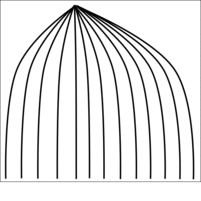CSS heat wave
 What's the best way to operate CSS? What produces the most bitumen and uses the least steam?
What's the best way to operate CSS? What produces the most bitumen and uses the least steam?
Cyclic steam stimulation (CSS) has many variants. One operator steams across patterns using a wave pattern. He believes steaming in a wave pattern introduces more gentle flexing of the overlying caprock, reduces cap rock fractures, lowers steam volume but increases recovery.
You can get his application documents within moments from our self serve application portal.
Buy these submission docs now Subscribers get them for free?subject=Help me with CSS best practices&body=Please help me with CSS best practices. %0D%0A%0D%0AMy Name:__________ %0D%0AMy Phone Number:__________ %0D%0A%0D%0A(Or call Proven Sales at 403-803-2500.)">Contact Proven for support. We stay on top of best practices from applications.
Wave history
The wave pattern was originally conceived to address thermal surface heave. Operators first used it believing that reduced steam can still improve recovery.
But CSS wave has advanced a long way since it was first used in 2011. Now operators believe that if they inject less at the ends of the pattern, they move the caprock in a smoother way preserving its integrity. They also list other advantages of steaming in a wave.
If you're using CSS and haven't considered wave steaming, you really should look into recent advances.
Leading indicators of thermal technology
You can't keep up with bitumen thermal technology by going to conferences. The technology changes way too quickly. Operators don't allow their employees to publish early results in technical journals.
The best way to keep up with technology is to watch applications. Each application is full of technology results and future plans.
SIRs - a gold mine of information
And applications are adjudicated by an engaged regulator focused on reviewing the working details of any scheme. Their supplemental information requests (SIRs) push operators to disclose even more details of technological plans. They reveal details of field operational problems.
Answers to SIRs show even more critical detail than the original applications. AppIntel includes the application documents, the supplemental information requests and the disposition documents. And you can get them in moments from AppIntel -- not days or weeks.
Appintel: do more with less
AppIntel costs less than a quarter of a person's salary. And it helps you find more intelligence quicker.
When coming out of a recession, companies have always turned to automation to improve the productivity of a leaner work force.
Just like carrying large loads by hand was replaced by hand trucks, and hand stitchers were replaced by sewing machines, so AppIntel can help your workforce become more productive. AppIntel presents applications on demand. It sends email alerts on new industry activity. It allows you to see your competitor's geological mapping. It helps you meet deadlines by understanding regulatory approval times.
Stay up to date on SAGD advances by email alert
Imagine if you could get an email alert every time a new SAGD application was submitted. You could use those alerts to stay abreast of new developments like this one. You can get unlimited alerts using AppIntel.
?subject=I want just a few email alerts&body=Sign me up for a few email area alerts. %0D%0A%0D%0AMy Name:___%0D%0AMy Phone Number:___%0D%0A%0D%0AType of applications___%0D%0ACentered on this UWI___%0D%0ARadius proximity from there___%0D%0A%0D%0APricing: www.appintel.info/just-alerts/%0D%0A%0D%0A(Or call AppIntel Sales at 403-803-2500.)">Contact us now to buy just a few cheap and cheery email alerts.
Tags: Thermal, Heavy Oil
 Granger Low 17 Nov 2016
Granger Low 17 Nov 2016

RTF: Most refused submission type in November
Leading indicators from industry

Astrobleme impacts deep well disposal scheme
Learn from the experience of other operators

Non-meridian thermal wells
Still drilling horizontal wells N‑S? Why?

Steam surfactant co-injection
Want to win? What is your competitive advantage?

Surprise! Sour gas production from a sweet thermal scheme
Dealing with surprises in the oil and gas industry. What to do next.

10 ways to increase production before Christmas - Infographic
For your wall to remind you

10 ways to increase production before Christmas
Each cost less than half a million

Using AI to reduce risk of oil and gas failure
How can you assess the risk without knowing the epic fails?

Artificial intelligence using vetted oil and gas information
Using anything else is dangerous




 Calgary, Alberta, Canada
Calgary, Alberta, Canada
 Share
Share